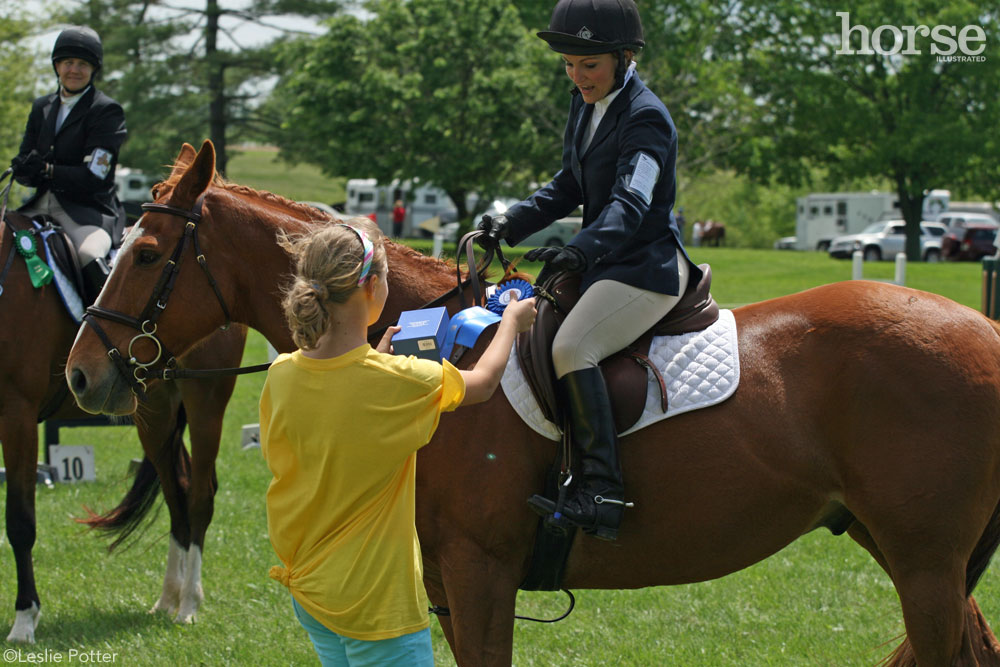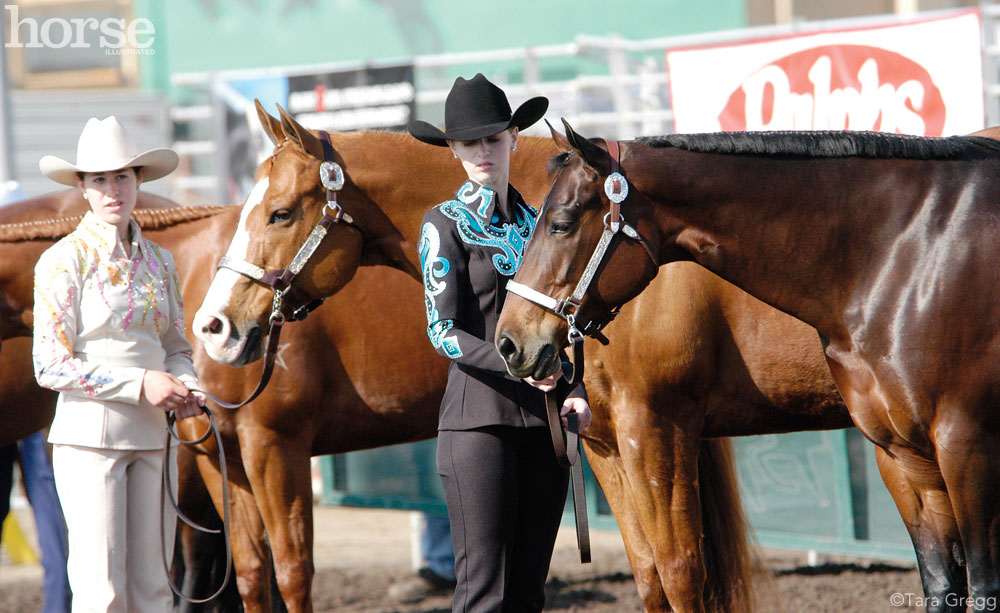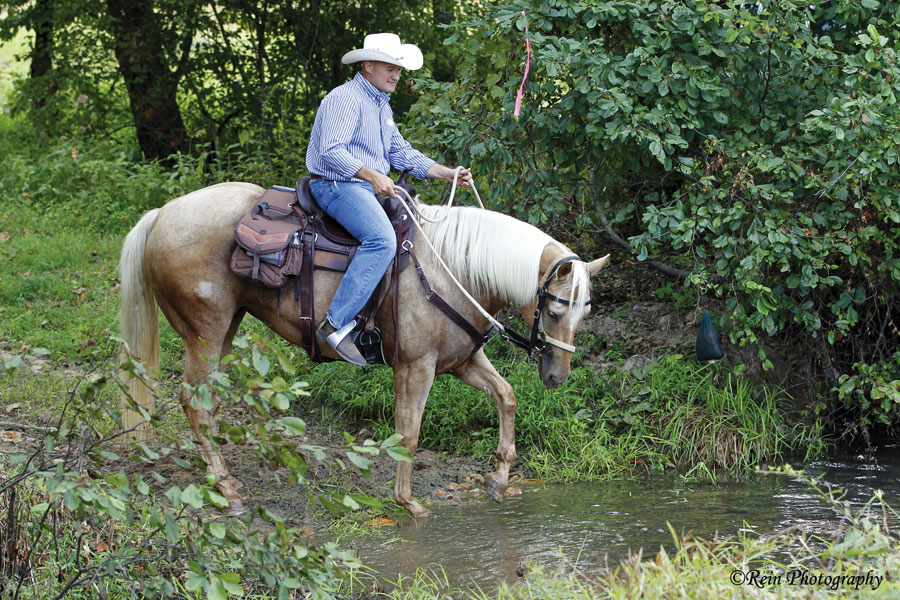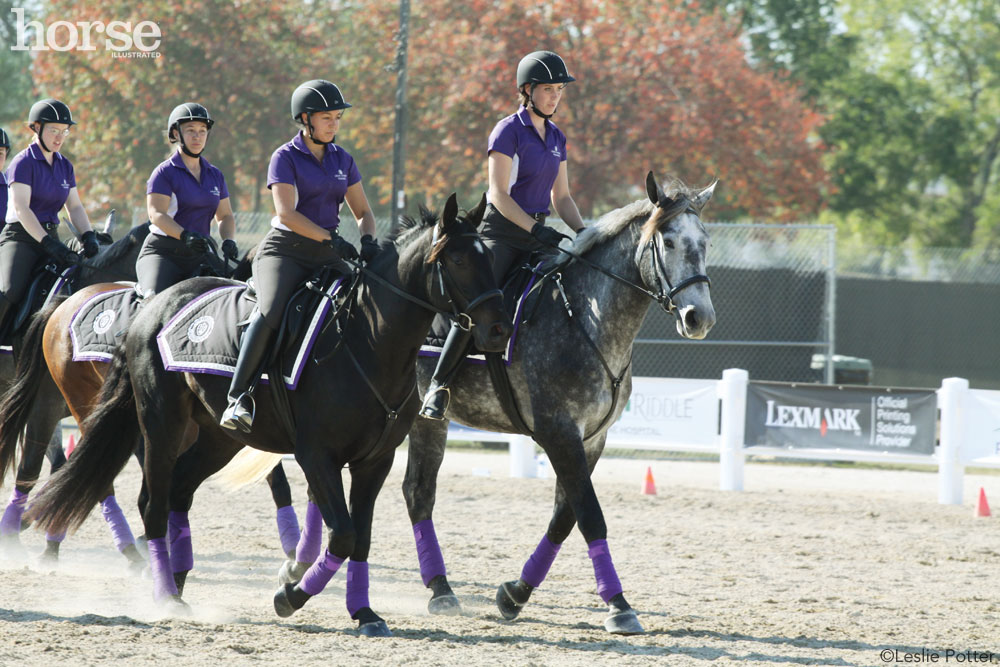
Besides companionship and joy, horses offer a whole lot of fun by giving you the opportunity to ride. And there are numerous riding sports to choose from, providing options for every type of equestrian. Whether you feed off the challenge of competition or just want to relax and enjoy some downtime with fellow horse people, you can find the riding activity that suits you best.
Horse Shows
Regardless of what equestrian activity you choose, you can generally find competitive opportunities. There are classes that focus more on the horse’s performance, some that look at the rider’s presentation, and others that judge both. You can ride, drive or do in-hand events. And it doesn’t matter if you’re a newbie. There are divisions for beginners as well as for intermediate- and advanced-level equestrians. In addition to all of these options, you have three main types of competition to choose from.
Open shows:
These events allow any breed of horse to compete, and offer a variety of English and western events, such as equitation, pleasure, jumping and trail obstacle classes. They’re generally more laid-back and have plenty of chances for newbies to get their feet wet. Check the Internet and regional equine publications for events in your area.
Discipline-specific shows:
Like the name implies, these competitions feature just one discipline, such as dressage. Shows are run according to the appropriate sport organization’s rules; for example, the United States Dressage Federation or the National Reining Horse Association. The United States Equestrian Federation (USEF) also governs shows for several national disciplines, including saddle seat equitation and western dressage. Discipline-specific shows can range from local competitions to national championships, so equestrians of every level have outlets for testing their skills. Check with the association that oversees your chosen sport for information about competitive opportunities in your region.
Breed shows:
If your horse is registered with his breed’s association, like the American Quarter Horse Association or the American Morgan Horse Association, you can compete in that organization’s shows for registered horses. Breed shows offer you the chance to enter classes in various disciplines, particularly those that highlight your breed’s known athletic strengths.

If you’ve never competed before, the more relaxed atmosphere of a schooling show, held locally by riding clubs and lesson barns, is an ideal place to start. These shows are meant to be fun opportunities for riders to figure out where they are in their training and what they need to work on with their horses. Plus, newcomers can get a feel for what competition is like.
When deciding what type of show you should compete in and at what level, consider your current skill set, as well as your horse’s abilities. Take a look at the rulebook for your sport or breed organization to learn what competitors are scored on at each level of competition. Also ask your instructor for her recommendations based on her observations of you and your horse during lessons.
Take to the Trail
Maybe you prefer the great outdoors to the confinement of an arena but still enjoy the challenge of competition. Luckily, there are some opportunities for you too.

Photo: Rein Photography/ACTHA
The American Competitive Trail Horse Association oversees competitive trail challenges across the country, in which horse and rider teams are judged on how well they execute maneuvers and negotiate obstacles that frequently pop up on trail rides: 360-degree turns, campsites, gates, dragging an object, water crossings, bridges and more.
Read more about competitive trail riding >>
Extreme cowboy racing is a similar event incorporating speed, requiring horses and riders to complete trail obstacles within a certain amount of time while still demonstrating good horsemanship. (Depending on the event, some of these competitions are held in arenas.)
Find out more about getting started in Extreme Cowboy Racing >>
Competitive mounted orienteering combines a treasure hunt with trail riding, testing riders’ horsemanship skills, map-reading abilities and compass skills while seeking out as many hidden “objective stations” as possible in the shortest amount of time.
Get an introduction to competitive mounted orienteering >>
Do you like to run as much as you like to ride? Find a partner who shares the same enthusiasm and try ride and tie. This sport covers a 20- to 100-mile course by alternating riding and running. One teammate runs while the other rides the horse as far as she thinks her partner can run (or walk) at an acceptable pace. The rider then stops, dismounts, ties the horse to a tree or fence post, and continues down the trail on foot. When the runner catches up, she hops on the horse and rides to meet her partner. They can either exchange there, or the rider can continue along the trail and tie the horse farther down to then head out on foot again. This continues to the finish line.
Learn more about the sport of ride and tie >>
Many outdoor enthusiasts enjoy long-distance trail riding, but the sport of endurance definitely requires a lot of conditioning work for you and your horse. You’ll want to seek help from an experienced long-distance rider to get you and your horse ready for the long road ahead.
If you just want to soak up some sun in the company of your horse and horsey friends, try a leisurely ride through a local state park or wilderness area with equestrian trails. For longer adventures, horse camping can be a lot of fun. If you’ve never been on an overnight trail trip, take along some friends who have. They can offer useful tips for planning and packing, and their experienced horses will help your horse get acclimated. Find campgrounds that allow horses, and verify what amenities and hookups they offer, if any. Some provide the comforts of home, such as water and electricity for campers, water sources for horses, and even corrals. Others will require you to rough it a little more and bring your own water and containment options for your horses. It’s important to decide what you’re comfortable with beforehand and book the appropriate campground. Don’t forget to locate trails and find out how far you have to go to get to them. Do a Google search for “horse camping” or visit the National Park Service at www.nps.gov to get started.
With any trail excursion, make sure someone knows where you’re going and how long you plan to be gone. Bring a cellphone in case of an emergency, and keep it on you rather than in your saddlebag so that you don’t lose it if you and your horse become separated. It’s a good idea to have a map of the trails you’ll be riding and/or a handheld GPS to help you stay on track.
Games and Team Sports on Horseback
When it comes to having fun in the saddle, you can’t beat mounted games. Riders of all ages and skill levels enjoy competing their horses and ponies on teams in races that test horsemanship and various riding abilities. Pole bending, popping balloons, and picking up and dropping off various objects are just a few of the activities featured in mounted games.
Another team sport that promotes camaraderie is drill team. A group of riders and their horses perform choreographed maneuvers to music. At competitions, teams are judged on spacing and alignment, timing and coordination, originality, difficulty, attractiveness of patterns, and more. Many teams also demonstrate their routines at rodeos, fairs and other equestrian events. What’s possibly even more fun is that you get to coordinate attire and accessories with your teammates and horses!

Team penning also offers the social benefits of working with a group of riders, along with the opportunity to work cattle. It’s a ranch event that comes from sorting cattle into pens for branding, doctoring or transport. A team of three riders and their horses has 60 to 90 seconds to separate three specific cows from a herd into a pen at the opposite end of the arena.
Getting Started
To get started in any new equestrian activity, it’s best to become acquainted with your discipline’s national governing organization. To see a list of sport organizations, turn to pg. 118. The USEF (www.usef.org) is also a good resource for various disciplines.
The next step would be to locate a stable in your area that offers riding lessons in your selected pursuit. An experienced instructor will be able to help you decide what level to start out at if you’re interested in competing, and offer suggestions for shows in your neck of the woods. Study the rulebook of your sport before attending any events so you can go in confident and prepared. If possible, go watch a show beforehand so that you’ll have an idea of what to expect.
Make sure you understand what type of tack and apparel you’ll need. In the beginning stages of any sport, you generally start with the basics, and you can build up your wardrobe (and your horse’s) as you move through the levels.
There are so many more ways you can have fun with your horse, and a bonus to any equestrian activity is the chance to meet other like-minded horse lovers. You just might develop a great group of friends to share your favorite horseback pursuits with. And if you try one activity that doesn’t suit you or your horse, there are plenty more to try out. That’s all part of the fun!
Kim Klimek is a freelance writer based in Kentucky. She has enjoyed trying many different equestrian sports, including dressage, saddle seat, polo and vaulting.
This article originally appeared in the 2015 edition of Your New Horse.






Interesting! I hope that everyone has a great,safe weekend,plus I’m sorry for being late with my comment,but I had other things to do.